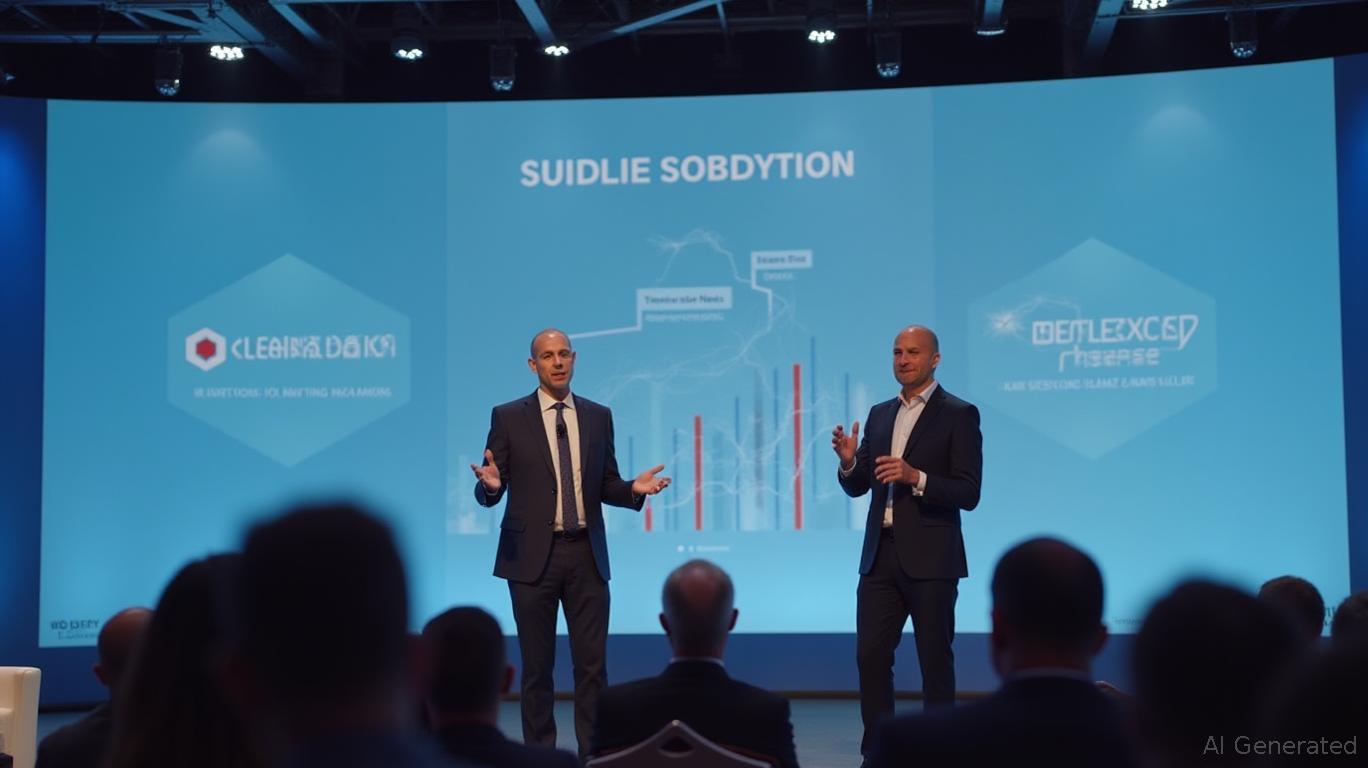Connecting Traditional Banking and Blockchain: ClearBank and Circle Propel Tokenized Finance Forward in Europe
- ClearBank partners with Circle to enhance digital asset infrastructure, advancing tokenized finance in Europe via stablecoin settlements. - Circle seeks U.S. bank charter to oversee reserves, aligning with crypto firms' push for federal oversight amid global stablecoin growth exceeding $300B. - Strategic collaborations with JPYC (Japan) and Crypto.com expand Circle's reach in diversified stablecoin ecosystems and DeFi lending markets. - Regulatory progress, including Fed's "skinny master accounts," accel
European financial institution ClearBank has formed a strategic alliance with stablecoin provider

This development reflects a broader industry movement, with both established banks and fintech companies increasingly embracing stablecoin solutions. Circle, which has been actively seeking regulatory permissions, recently applied for a U.S. National Trust Bank charter to manage its stablecoin reserves, according to
Circle’s collaboration with ClearBank also supports its ongoing global expansion. In Japan, fintech firm JPYC has introduced a yen-pegged stablecoin (JPYC), fully backed by bank deposits and government securities, as detailed by Yahoo Finance. This move highlights the worldwide appetite for diverse stablecoin offerings, with Circle emerging as a significant player in both dollar- and yen-denominated digital currencies.
The ClearBank partnership is anticipated to drive further stablecoin integration across Europe, where regulatory hurdles persist. Circle’s current infrastructure has already attracted attention from leading organizations, including Western Union, which recently tested a stablecoin-based settlement platform for international money transfers, according to
At the same time, Circle is reinforcing its presence in crypto custody and lending. Crypto.com, another stablecoin partner, has incorporated Morpho—a decentralized finance (DeFi) lending protocol—into its services, allowing users to access stablecoin lending markets. Built on the Cronos blockchain, this integration lets users use assets like
Recent regulatory actions have further fueled industry growth. The U.S. Office of the Comptroller of the Currency (OCC) has given banks the green light to hold crypto assets, prompting applications from companies such as Erebor and Anchorage Digital. Meanwhile, the Federal Reserve is considering “skinny master accounts” for crypto businesses, which would provide limited access to Fed services without requiring a full banking charter.
Jeremy Allaire, CEO of Circle, stressed the necessity of clear regulations to foster trust. “Launching a national digital currency trust bank is a crucial step toward our vision of a transparent, efficient, and inclusive internet-based financial system,” he said.
With stablecoin usage on the rise, the ClearBank and Circle partnership underscores the merging of conventional banking and blockchain innovation. As major remittance providers and fintech leaders adopt digital assets, the foundation for a more connected global financial system is becoming increasingly robust.
Disclaimer: The content of this article solely reflects the author's opinion and does not represent the platform in any capacity. This article is not intended to serve as a reference for making investment decisions.
You may also like
Ayandeh Bank Collapse Affects 42M, Highlighting Bitcoin’s Role
Nikkei 225 Surges 65% Since Tariff Lows, Reaches Record 50,000 Points
Former PayPal President Confirms Bitcoin Could Process Trillions Daily
Bitcoin Updates: Will MoonBull Maintain Its Pace During Crypto Market Volatility?
- MoonBull ($MOBU) presale reaches Stage 5 with $450,000 raised and 1,500+ holders, driven by 27.40% stage price increases and 163.36% early investor gains. - Project employs Mobunomics framework with liquidity locks, deflationary burns, and governance voting to stabilize value and reward community participation. - Crypto markets remain volatile: Bitcoin hovers near $111,300 while Ethereum drops 6.5% amid ETF outflows and U.S.-China tensions amplifying risk-off sentiment. - Fed's cautious rate-cut stance a
